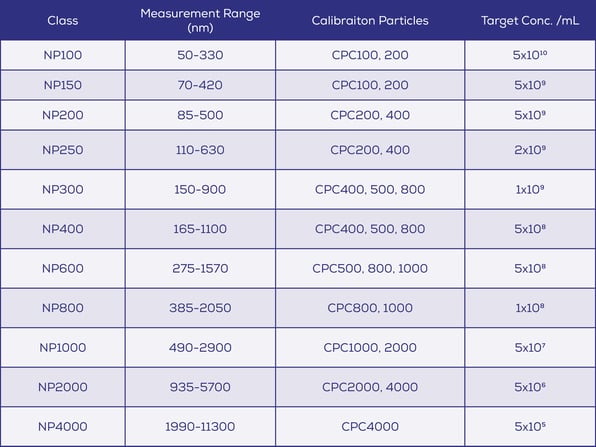Can the calibration particle be used as supplied or do they require dilution?
All Izon calibration particles must be diluted before use. The raw concentration of the Izon calibration particles is clearly marked on the vial label. The target diluted calibration particle concentration is dependent on the nanopore in use and detailed in the below table:

Each nanopore size has an optimum sample dilution. If the sample is too concentrated, the nanopore may become blocked, particularly when pressure is applied using the VPM. If the sample is too dilute, the particle count will be very low leading to inaccurate results.
Data recordings should ideally be short as the longer they are the more likely that blocking, sample evaporation and pressure leakage may cause inaccuracies.
Analysis range is indicative of particle sizes that can be analysed across the stretch range of the nanopore.
- For the lower size range, a higher concentration electrolyte than standard PBS may be used for the instrument to detect 40 nm particles. Use 2x PBS equivalent if you are having difficulty measuring 40 nm particles.
- For the higher size range, a lower concentration electrolyte than standard PBS may be used for the instrument to detect up to 11,000 nm size particles without railing the electronics.
If a measurement is completed on the qNano via Classic Capture, the voltage should be optimised when a baseline current has been established - typically aim to achieve a current of 120 - 140 nA, using the default high gain setting.
- For large nanopores, better results may be obtained by using a less conductive electrolyte or switching to the low gain stage (via Settings). This will allow a larger voltage to be applied.
- When working at high stretch (>47 mm), it may be better to select the next size up of calibration particles.